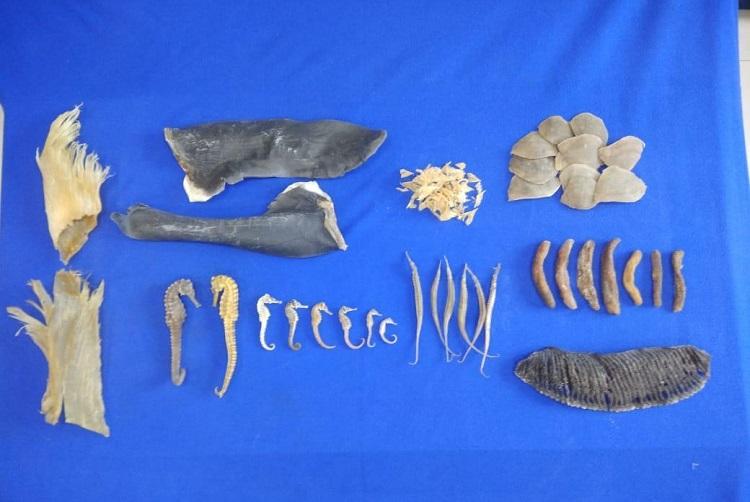
Wildlife species are having great value in international market, some among them are already in endangered species list as some cruel humans don’t have limit to their greed. Let me explain you the news first then later about these wild life species and the facts behind the smuggling.
Two persons were recently detained for illegal trade in wildlife and 660 kg of pangolin scales, dried sea horse, dried pipe fish and sea cucumber worth ₹7 crore seized.
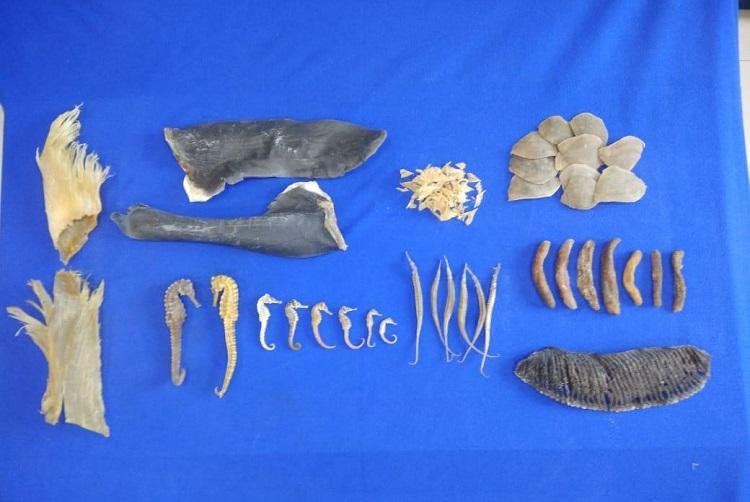
The scales of pangolin, an endangered species, sea horse, pipe fish, manta and mobula ray gills are used in traditional Chinese medicine and shark fins are used to make soup in China.
Based on intelligence inputs, Customs officials searched a godown in Mannady and found the items in plastic crates and bags, according to a press release. “On entering the godown, the officers found two persons inside, who tried to flee, but were overpowered by the officers. Initially, they were evasive, but after sustained questioning, they informed that these were pangolin scales, sea horses, pipe fish and shark fins,” the release said.
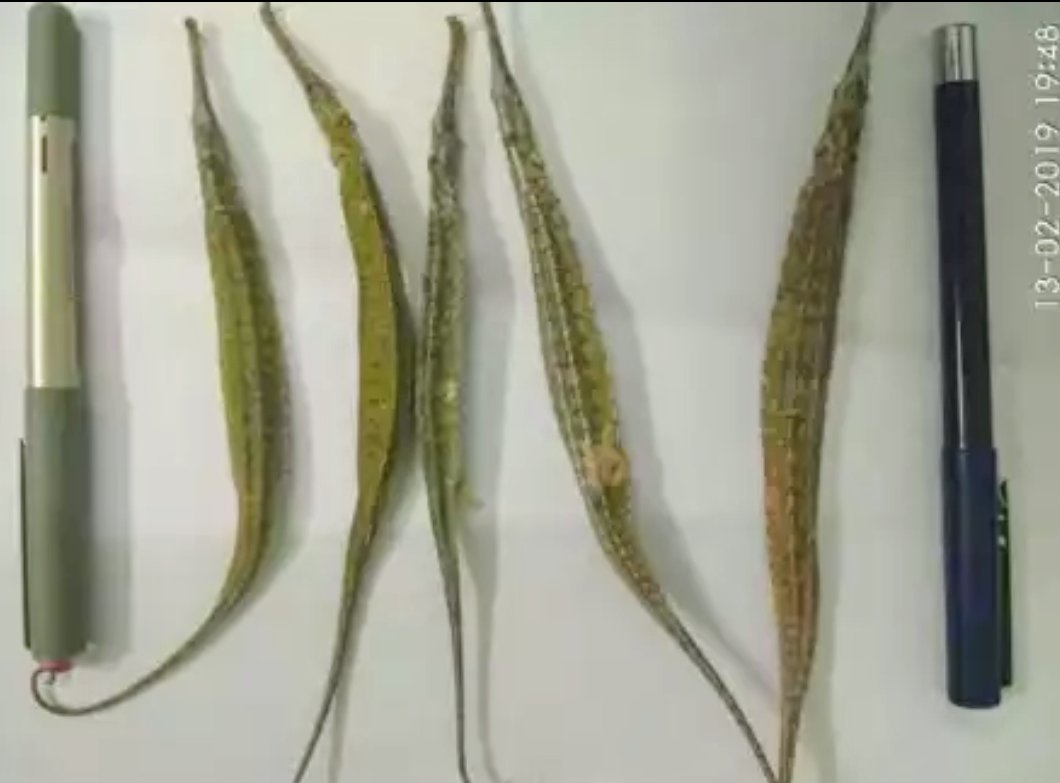
Thetwo men had got the wildlife from the Rameswaram coastal area and Kasimedu and a Sri Lankan national handed over the pangolin scales to the godown; the live species were then processed in the godown, the release said.
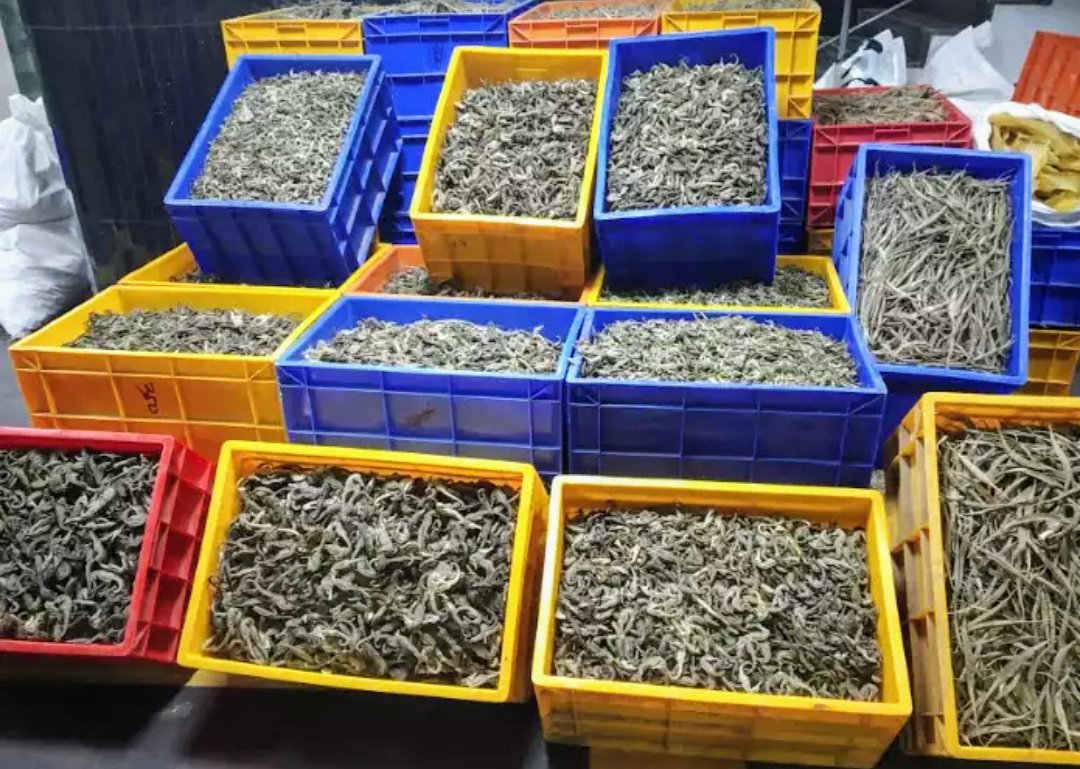
They were to be transported to Mumbai later, for smuggling to China and South East Asian countries.
Let’s see the story behind the smuggling of these endangered species and how they been used.
Shark Fins :
Shark finning is the act of removing fins from sharks and discarding the rest of the shark. The sharks are often still alive when discarded, but without their fins. Unable to swim effectively, they sink to the bottom of the ocean and die of suffocation or are eaten by other predators.
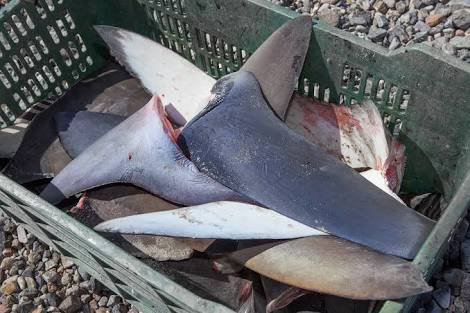
Shark finning at sea enables fishing vessels to increase profitability and increase the number of sharks harvested, as they only have to store and transport the fins, by far the most profitable part of the shark; the shark meat is bulky to transport. Some countries have banned this practice and require the whole shark to be brought back to port before removing the fin.

Dried shark fins for sale in a Taipei market. © Craig Ferguson/LightRocket/Getty
How they be used :
Shark fins are used to make shark fin soup, a delicacy once prepared exclusively for the Chinese emperors and nobility. The cartilage from the fin is carefully dried and prepared, and used as an ingredient in a soup flavored with seafood or chicken broth and herbs. The process of preparation makes this dish very costly, as much as $100.00 a bowl, and is commonly served at banquets and weddings. The serving of the dish is considered very prestigious and even propitious.
Dried shark fin is the most expensive seafood product by weight, and is creating huge incentive for fishermen to hunt sharks, solely for their fins.
Current Status :
Shark finning has caused catastrophic harm to the marine ecosystem.Roughly 73 million sharks are killed each year by finning,though some estimate that finning kills 100 million sharks each year. A variety of shark species are threatened by shark finning, including the endangered scalloped hammerhead shark.
Pangolin Scales :
Pangolins have large, protective keratin scales covering their skin; they are the only known mammals with this feature. They live in hollow trees or burrows, depending on the species. Pangolins are nocturnal, and their diet consists of mainly ants and termites, which they capture using their long tongues. They tend to be solitary animals, meeting only to mate and produce a litter of one to three offspring, which are raised for about two years.
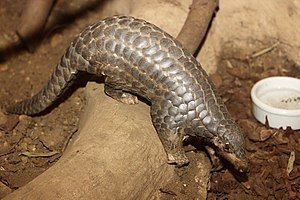
Pangolins are threatened by poaching (for their meat and scales) and heavy deforestation of their natural habitats, and are the most trafficked mammals in the world.Of the eight species of pangolin, four (Phataginus tetradactyla, P. tricuspis, Smutsia gigantea, and S. temminckii) are listed as vulnerable, two (Manis crassicaudata and M. culionensis) are listed as endangered, and two (M. pentadactyla and M. javanica) are listed as critically endangered on the International Union for Conservation of Nature Red List of Threatened Species.
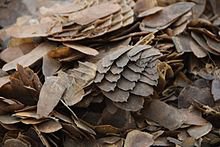
How they be used :
The animal itself is eaten, but a greater danger arises from the belief that the scales have medicinal value. Fresh scales are never used, but dried scales are roasted, ashed, cooked in oil, butter, vinegar, boy’s urine, or roasted with earth or oyster-shells, to cure a variety of ills. Amongst these are excessive nervousness and hysterical crying in children, women possessed by devils and ogres, malarial fever and deafness.
Behind Dried Seahorses Trade :
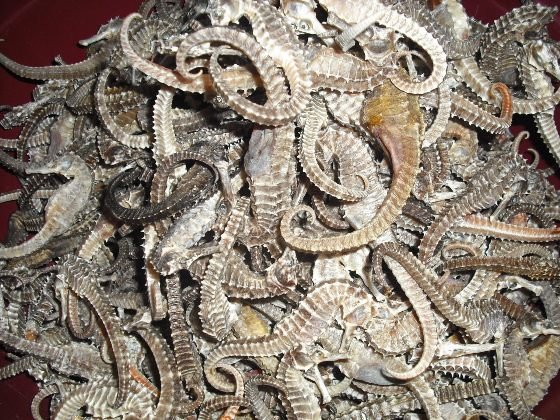
Worldwide, seahorses are in trouble, threatened by habitat loss, and sold in a massive global trade. Scientists say this can’t go on, or seahorses will severely decline. But existing conservation efforts may not be enough to save them.
Researchers estimate that 37 million seahorses are taken from shallow, lush coastal waters every year, mostly ensnared by indiscriminate fishing gear. Southeast Asia and West Africa are the main regions exporting them. More than half of captured seahorses end up dead, dried and sold internationally for use in traditional medicines thought to boost virility and even cure impotence. A small percent are plunked into home aquariums, or sold as kitschy souvenirs.
Twelve seahorse species are listed as “vulnerable” by the International Union for the Conservation of Nature, one step down from endangered. An additional 17 species are understudied, and listed as “data deficient.” Two are endangered.
In 2002, an international treaty called the Convention on International Trade in Endangered Species of Wild Fauna and Flora, or CITES, responded to mounting concerns by tightening trade restrictionson all 44 species of seahorse. But scientists say that existing measures don’t go far enough.
In the decade after the restrictions took effect, tens of millions of seahorses still died worldwide because of nonselective fishing. Millions were still sold around the world. Between 2005 and 2015, the US imported roughly 140,000 live, wild-caught seahorses through Los Angeles, San Francisco and Seattle alone, according to U.S. Fish and Wildlife Service data obtained under a Freedom of Information Act request.
To make matters worse, many of the fishing methods to catch seahorses also destroy their habitats. Overfishing is just one part of a much larger issue. Despite legal protection, life keeps getting harder for these unusual fish.
Behind the scenes of pipe fish trade :
Pipe fish is a type of fish that is closely related to the sea horse. There are an estimated 200 varieties of pipe fish, including a few varieties that live in fresh water. The typical pipe fish ranges between five and six inches in length (although some have been known to reach a height of 18 inches), with long, slender bodies encased in segmented plates and a four-sided tail. Some pipe fishes have a small hump located just behind the eyes; others have long snouts. The whole fish is used as a medicinal. It is caught, cleaned, then dried in the sun and used either whole, or as a powder.
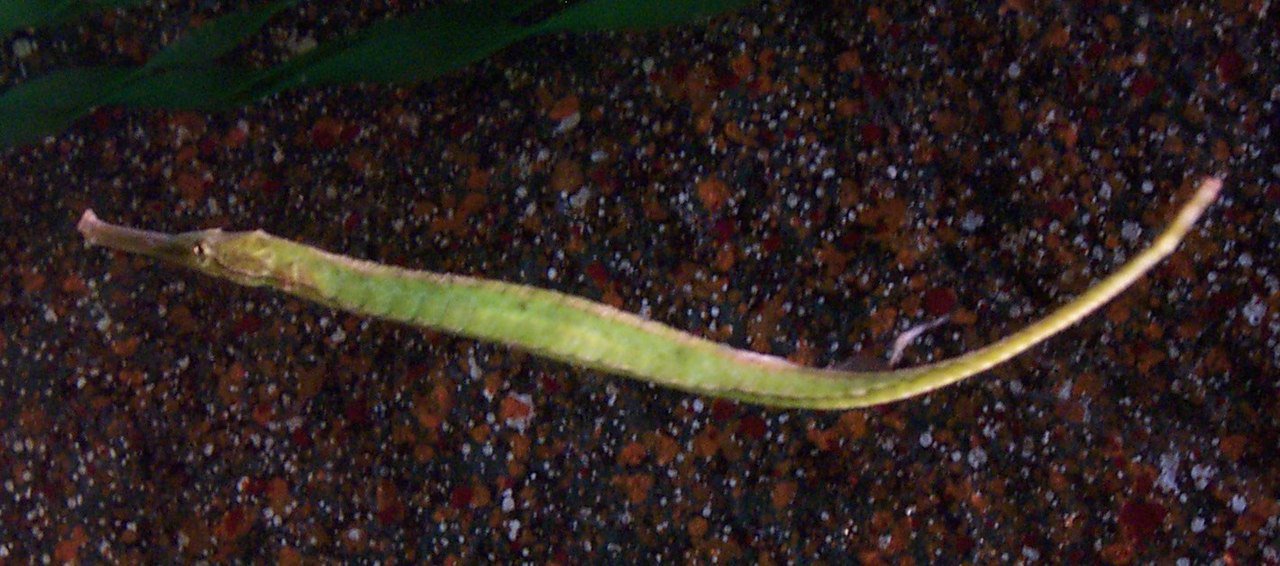
According to the principles of traditional Chinese medicine, pipe fish has sweet, salty and slightly warm properties, and is associated with the Kidney meridian. Its main function is to strengthen the kidney.
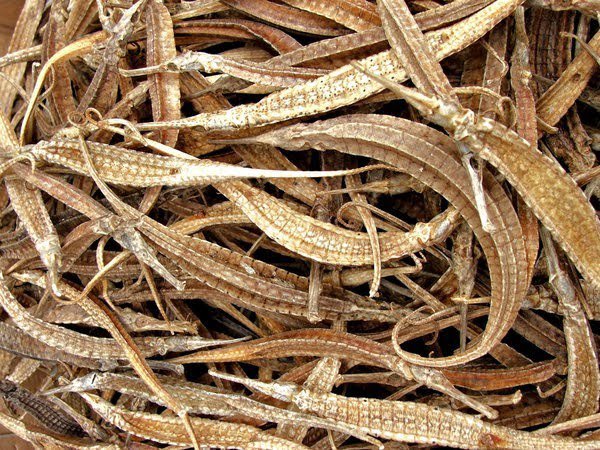
It is also considered an aphrodisiac; the larger the pipe fish, the more potent its properties. Pipe fish is often incorporated into kidney yang tonics. Studies conducted in China suggest that pipefish may be beneficial in reducing the growth of some cancerous tumors, but this research has yet to be conducted on a large scale.
Let’s see Little about Sea cucumber and how this is being used.
Sea cucumber:
Sea cucumber is a marine invertebrate related to sea urchins and star fish. It is dried and used in soups and other dishes and is considered a delicacy in Asian countries.
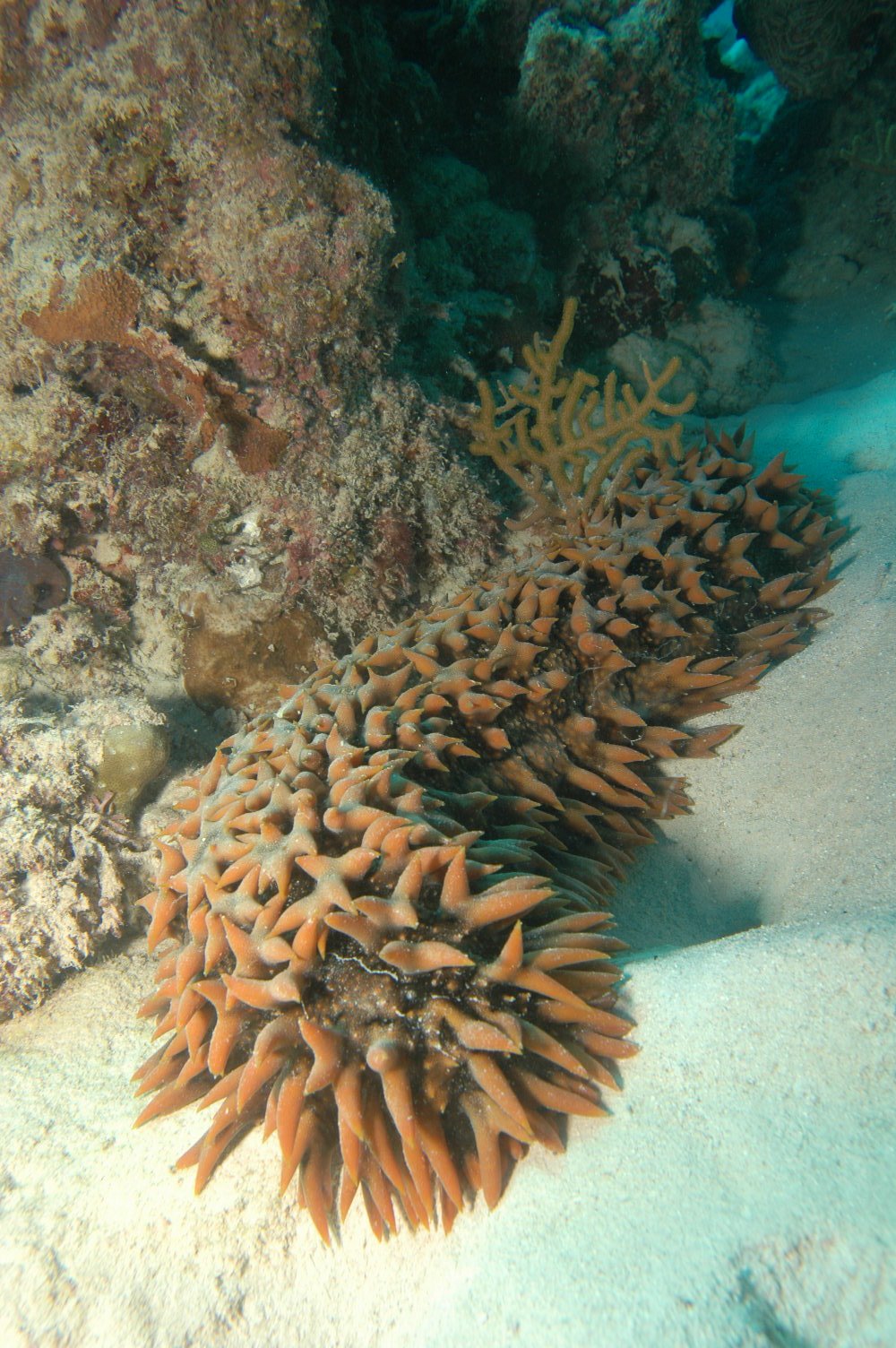
Sea cucumber is used in traditional Chinese medicine to treat fatigue, impotence, constipation, frequent urination, and joint pain. It is also a rich source of chondroitin sulfate, commonly used for arthritis. There are no reports of adverse effects from use of sea cucumber.

The usage includes,
Cancer Treatment
Laboratory experiments suggest a saponin component derived from sea cucumber may have antitumor effects by inhibiting formation of new blood vessels. This effect has not been studied in humans.
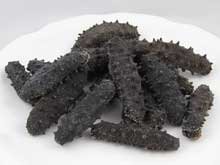
Longevity
Sea cucumber is used in Chinese medicine to increase longevity, but there are no clinical data to support this use.
Impotence
Although Sea cucumber in Chinese medicine used to treat impotence, there are no clinical data to back this use.
Joint Pain
Sea cucumber is a rich source of chondroitin sulfate, shown to be effective for osteoarthritis.
Frequent Urination
Sea cucumber is used in Chinese medicine to treat urinary problems. However, clinical data to support this use are lacking.